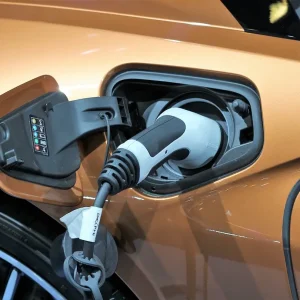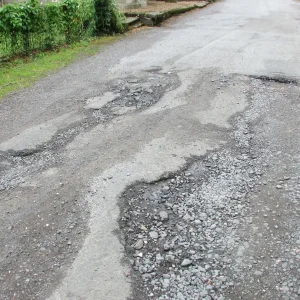Formerly known as the DS 3 Crossback, the French premium brand’s small SUV now has a simplified name – and has also received a mid-life facelift to go with its new badging.
With the E-Tense pure electric version we’re concentrating on here – two petrol engine options are also available – significant upgrades have been made to the powertrain. It’s the first Stellantis group model to get new electric motor technology that DS claims is inspired by its Formula E racing cars. Compared with the pre-facelift model, power has seen a useful increase, from 136hp to 155hp.
Greater improvements have been made to the model’s driving range, including by fitting a bigger battery, and by making efficiency changes such as fitting a heat pump and thermal preconditioning software, and improving the car’s aerodynamics with elements such as a redesigned rear spoiler, flush-fitting door handles (which work better than other examples we’ve previously tried), a reprofiled diffuser, narrower tyres, and a 10mm reduction in ride height. The upshot of this is that range between charges has gone up from 212 miles to a maximum of 250 miles on the official WLTP cycle (our top-spec Opera-grade test car can achieve 246 miles).
The DS 3’s power increase translates into useful performance on the road, with immediate acceleration a particular asset when nipping into traffic.
It doesn’t offer the last word in nippy handling, with uncommunicative steering spoiling driver engagement, but there’s a secure and planted feeling which should instil confidence nevertheless.
As for ride comfort, where some EVs with their heavy batteries have a tendency to thud into potholes, this isn’t something that afflicts the DS 3, which does a very impressive job of smoothing out rough road surfaces. Refinement on the move is also good – not always the given you might think with EVs, but DS claims to have improved the model’s soundproofing and this does appear to have paid dividends, with those aerodynamic tweaks also doubtless helping to reduce wind noise.
As well as said aero changes, exterior design updates include a new-look front grille and bumper, sharper headlight designs, a new daytime running light arrangement, and new black rear trim.
The DS 3’s cabin appears stylish and also well-trimmed in our Opera test car, with a good selection of soft materials deployed, and we’re particular fans of the plush ‘watchstrap’ leather seats.
Interior controls are a combination of a 10.3in touchscreen (on all but entry-level models running the Iris system previously seen on the DS 4, with over-the-air updates) with physical touch buttons, which is welcome, but the latter are arranged in DS’s trademark diamond style which means they aren’t the easiest to fathom at first glance, and might cause some consternation in a car sharing situation, although we’re sure a regular company car driver would get on top of things fairly quickly. Another unusual aspect is window controls placed either side of the gear lever.
An annoyance with our test car was that it seemed confused by UK speed limit signs, thinking it needed to convert them from kph to mph even though they were obviously in mph already, so for instance a 30mph speed limit in town would translate to ’19’ being displayed on the dash.
Rear legroom in the DS 3 is not the most commodious, and we imagine adults might be a bit cramped behind a tall driver, although headroom is adequate. A 350-litre boot is perhaps a touch pokey for the segment – though no smaller than it is on petrol-engined DS 3s – and there is a slightly high lip for luggage to be loaded over.
As a small electric SUV from a premium brand, the DS 3 doesn’t really have any direct rivals. On P11D, with our Opera test car coming in at over £42,000, a range-topping electric version of (fellow Stellantis group model) the Vauxhall Mokka is £4,000 cheaper, but given that model is less powerful and has a shorter range this perhaps isn’t unreasonable. The DS does, however, suffer from relatively weak predicted residual values, meaning the cost-per-mile gap is more significant. In addition, as a premium alternative, while an entry-level version of the significantly larger Audi Q4 E-Tron costs over £7k more up-front, residuals a whopping 15 percentage points stronger mean it actually works out cheaper than its smaller French counterpart on the same cost-per-mile basis.
DS 3 Opera E-Tense
P11D: £42,645
Residual value: 36.8%
Depreciation: £26,941
Fuel: £4,212
Service, maintenance and repair: £1,533
Cost per mile: 54.47p
Range: 246 miles
CO2 (BIK %): 0g/km (2%)
BIK 20/40% a month: £14/£28
Luggage capacity: 350 litres
Engine size/power: 54kWh/155hp





